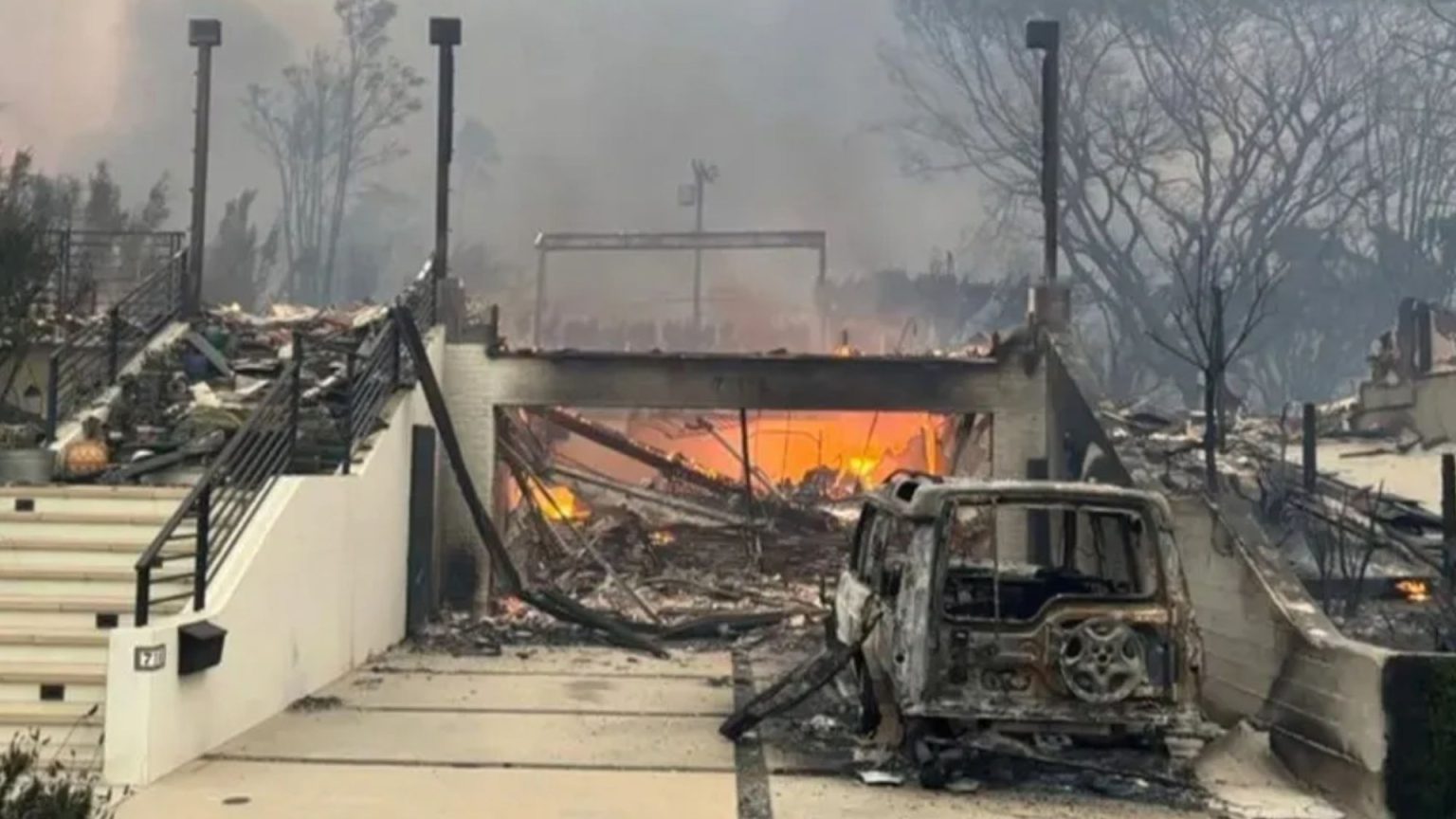The Pacific Palisades community in Los Angeles was ravaged by a devastating wildfire, leaving residents like British expatriate Andrew Stalbow grappling with the aftermath of a scene he described as “apocalyptic.” The blaze, the largest and most destructive in the region, transformed the once-familiar landscape into a desolate wasteland, reminiscent of the aftermath of an atomic bomb. Homes, schools, and businesses were reduced to ashes, leaving a community reeling from the widespread destruction. Stalbow, a resident since 2008, lost not only his home but also cherished belongings, including irreplaceable photographs of his late grandfather. The emotional toll of the loss was palpable, as he recounted the shock of seeing his neighborhood unrecognizable, a sentiment echoed by countless others whose lives were upended by the inferno.
The wildfire prompted a frantic evacuation, with residents scrambling to escape the advancing flames. Stalbow’s wife, a nursery school teacher, faced the daunting task of gathering their children from school while simultaneously navigating the chaos of the evacuation. Amid the fear and uncertainty, she emerged as a beacon of strength and resilience, ensuring the safety of her family. Stalbow expressed immense gratitude for his wife’s heroic actions and the overwhelming support from friends and neighbors, emphasizing the collective sense of relief that everyone survived the ordeal. However, the devastation remained a stark reality, with countless lives irrevocably altered by the destruction of homes and livelihoods.
The scale of the disaster was staggering. Five lives were lost in the uncontrolled fires that swept across Los Angeles. Over 130,000 people were forced to evacuate, and schools were closed as the flames encroached on populated areas. Nearly 400,000 homes were left without power, a testament to the widespread impact of the fires. Over 2,000 buildings were destroyed, and more than 30,000 acres were scorched, painting a grim picture of the devastation wrought by the inferno. Firefighters battled relentlessly against the flames, facing challenging conditions, including a dwindling water supply. Their unwavering dedication and bravery were lauded by Stalbow and others, who recognized the immense risks they faced in protecting the community.
The fires impacted everyone, regardless of socioeconomic status. Even celebrities residing in the affluent areas of Los Angeles, such as Take That star Mark Owen, were forced to evacuate their homes. Owen’s wife, Emma, shared the harrowing experience on social media, describing the terrifying scenes of helicopters battling the blaze, thick black smoke filling the air, and howling winds fanning the flames. The infernos tore through Malibu, the Hollywood Hills, and Runyon Canyon, turning these iconic locations into a fiery battleground. The state of emergency declared underscored the severity of the situation, as the fires consumed homes and threatened lives.
The various fires impacting Los Angeles were categorized and tracked based on their origin, size, containment status, and the resulting damage. The Palisades Fire, originating near Palisades Drive, consumed 17,000 acres and resulted in significant injuries and the destruction of at least 1,000 buildings, threatening thousands more. The Eaton Fire in Altadena tragically claimed five lives and forced the evacuation of 100,000 people. The Sunset Fire, though smaller in scale, threatened iconic Los Angeles landmarks like Sunset Boulevard, Hollywood Boulevard, and the Hollywood sign. The Hurst Fire in Sylmar burned 850 acres but thankfully did not damage any homes. Finally, the Lidia Fire, burning north of the Magic Mountain Wilderness Area, was primarily contained to brush and posed less of a threat to residential areas.
Despite the immense loss and widespread destruction, Stalbow expressed a sense of optimism about the future. He acknowledged the daunting task of rebuilding but emphasized the resilience of the community and the determination to overcome this adversity. He expressed confidence that the “British spirit” combined with “American optimism” would fuel the recovery efforts. The rebuilding process would undoubtedly be lengthy and challenging, but the shared commitment to restoring the community offered a glimmer of hope amidst the devastation. The story of the Pacific Palisades fire serves as a stark reminder of the destructive power of nature and the importance of community resilience in the face of tragedy.




